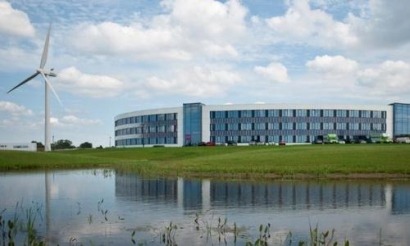
Just days before the United Nations Conference on Sustainable Development('Rio +20'), thousands of citizens all over the world will discover the power of wind energy. On 15 June, over 50 organisations are joining together to present 'Global Wind Day', while citizens engage to support wind power. Last year, more than 230 events were organised in 40 countries, including wind farm visits, open air concerts and public debates.
“By 2030 the world's primary energy consumption is expected to grow by 40%. The global population will rise from 7 billion people now to over 8 billion people in 20 years. More than half of the growing fossil fuel consumption would be used to generate power unless the world leaders boost wind power and other renewable energies. Without much more wind and renewable power production, carbion dioxide emission would explode: plus 30%,” says the organisers of the event, the European Wind Energy Association and the Global Wind Energy Council.
This year, ahead of Global Wind Day, 2,300 people from 65 countries participated in a wind power photo competition, including one sender from a scientific station in Antarctica. 16 Global Wind Day ambassadors, including Adnan Amin, the Director General of the International Renewable Energy Agency, support this year's events: in Hamburg a charity run; in Wembley (London), a football tournament; in New Zealand, painting competitions in schools; in Boston (US), the "Energy Week 2012"; and spectacular "Abseiling" from wind turbines in Austria.
First company in world to become WindMade
There are many novel ways in which the wind sector is boosting awareness of its potential. This includes the recently established global consumer label for companies that use wind energy, WindMade. The label, which is backed by the UN Global Compact, requires participating companies to obtain at least 25% of their electricity from wind power.
This month sees the first company in the world receiving the WindMade label: the Danish hearing aid manufacturer, Widex. A wind turbine at Widex' new global headquarters in Denmark covers 95% of its energy needs, including production, thereby greatly exceeding the basic requirements for joining the WindMade programme.
"Being a high tech company, we have an uncompromising approach to innovation and we always strive to find the best solution. By completely eliminating the use of fossil fuels, we believe that we have created the best possible foundation for the future - both for our company and for society," explains Richard Tøpholm, Manager at Widex and member of the Board.
The WindMade label was created to allow companies to communicate their commitment to renewable energy while providing consumers with the choice to favour companies and products using wind power.
"We congratulate Widex for becoming the first ever WindMade certified company. By committing to renewable energy and using the WindMade label, Widex has set a great example that will inspire companies and consumers all over the world", stresses Henrik Kuffner, CEO of WindMade.
Other major companies have expressed their commitment to the initiative and will be certified in the coming months, including Becton Dickinson, Motorola, Deutsche Bank and PricewaterhouseCoopers Denmark.
For additional information:
If we agree to “think globally”, it becomes evident that riveting attention on GROWTH could be a grave mistake because we are denying how economic and population growth in the communities in which we live cannot continue as it has until now.
Each village's resources are being dissipated, each town's environment degraded and every city's fitness as place for our children to inhabit is being threatened. To proclaim something like, 'the meat of any community plan for the future is, of course, growth' fails to acknowledge that many villages, towns and cities are already ‘built out’, and also ‘filled in’ with people.
If the quality of life we enjoy now is to be maintained for the children, then limits on economic and population growth will have to be set. By so doing, we choose to “act locally" and sustainably. More economic and population growth are no longer sustainable in many too many places on the surface of Earth because biological constraints and physical limitations are immutably imposed upon ever increasing human consumption, production and population activities of people in many communities where most of us reside.
Inasmuch as the Earth is finite with frangible environs, there comes a point at which GROWTH is unsustainable. There is much work to done locally. But that effort cannot reasonably begin without sensibly limiting economic and population growth. To quote another source, “We face a wide-open opportunity to break with the old ways of doing the town’s business…..” That is a true statement. But the necessary “break with the old ways” of continous economic and population growth is not what is occurring. There is a call for a break with the old ways, but the required changes in behavior are not what is being proposed as we plan for the future.
What is being proposed and continues to occur is more of the same, old business-as-usual overconsumption, overproduction and overpopulation activities, the very activities that appear to be growing unsustainbly. More business-as-usual could soon become patently unsustainable, both locally and globally. A finite planet with the size, composition and environs of the Earth and a community with the boundaries, limited resources and wondrous climate of villages, towns and cities where we live may not be able to sustain much longer the economic and population growth that is occurring on our watch.
Perhaps necessary changes away from UNSUSTAINABLE GROWTH and toward sustainable lifestyles and right-sized corporate enterprises are in the offing. Think globally while there is still time and act locally before it is too late for human action to make any difference in the clear and presently dangerous course of unfolding human-induced ecological events, both in our planetary home and in our villages, towns and cities.

